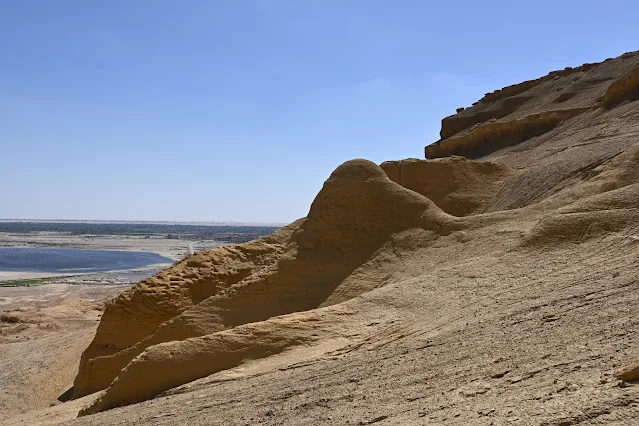Unveiling the Mineral Treasures of Fayoum: A Geological Gem
Introduction:
Nestled within the picturesque landscapes of Egypt's Fayoum region lies a hidden treasure trove beneath the earth's surface. Fayoum boasts a rich geological heritage, abundant in diverse minerals that have captured the attention of geologists and mineral enthusiasts alike. From ancient times to the present day, these minerals have played a significant role in the region's history, economy, and cultural identity. In this article, we embark on a journey to explore the captivating world of minerals in Fayoum.
A Geological Tapestry:
Fayoum's mineral wealth is a product of its complex geological history. The region is home to various sedimentary, igneous, and metamorphic rocks, which have contributed to the formation of diverse mineral deposits. Limestone, sandstone, gypsum, clay, and dolomite are some of the prominent rock types that have given rise to a wide array of minerals.
Gypsum:
Fayoum is renowned for its vast gypsum deposits, which have been utilized since ancient times. Gypsum, a soft sulfate mineral, is extensively found in the region and has been used in construction, pottery, and as a fertilizer. The gypsum formations in Fayoum exhibit stunning crystalline structures, captivating visitors with their intricate beauty.
Phosphate:
Phosphate deposits hold immense economic importance in Fayoum. The region is known for its phosphate-rich layers, which have attracted mining activities over the years. Phosphate is a key ingredient in fertilizers, contributing to agricultural productivity and supporting Egypt's agricultural sector. The presence of phosphate in Fayoum has played a vital role in the country's food security.
Clay and Kaolin:
Fayoum is also notable for its clay and kaolin deposits, which have been utilized in pottery and ceramics for centuries. The clay-rich soils provide an ideal medium for artisans to create exquisite pottery and earthenware, showcasing the region's artistic heritage. Kaolin, a type of clay, is known for its use in the production of porcelain and fine ceramics, adding to the cultural and economic significance of the region.
Gemstones and Decorative Minerals:
Fayoum is adorned with a range of gemstones and decorative minerals. Agate, amethyst, carnelian, jasper, and quartz are some of the gemstones found in the region. These vibrant and alluring minerals have been used for centuries in jewelry, crafts, and ornamental purposes, reflecting the artistic traditions and craftsmanship of the area.
Economic Impact and Sustainability:
The mineral resources in Fayoum have contributed to the economic development of the region and the wider country. Mining activities provide employment opportunities and generate revenue. However, it is essential to strike a balance between economic development and environmental sustainability, ensuring responsible mining practices and the preservation of the region's natural beauty.
Preserving the Geological Heritage:
Fayoum's mineral treasures are not only valuable in terms of their economic significance but also play a role in understanding the Earth's geological history. Scientists and researchers continue to study the minerals of Fayoum, unraveling the mysteries of their formation and their contribution to the region's geological evolution. Preserving these geological heritage sites is crucial for future generations to appreciate and learn from.
Conclusion:
The minerals of Fayoum form a captivating tapestry that weaves together geological history, cultural traditions, and economic significance. From gypsum and phosphate to clay and gemstones, these minerals have shaped the region's identity and contributed to its development. Exploring the mineral wealth of Fayoum offers a glimpse into the intricate beauty of the Earth and its enduring gifts to humanity. Let us cherish and protect these geological gems, ensuring their preservation for generations to come.



